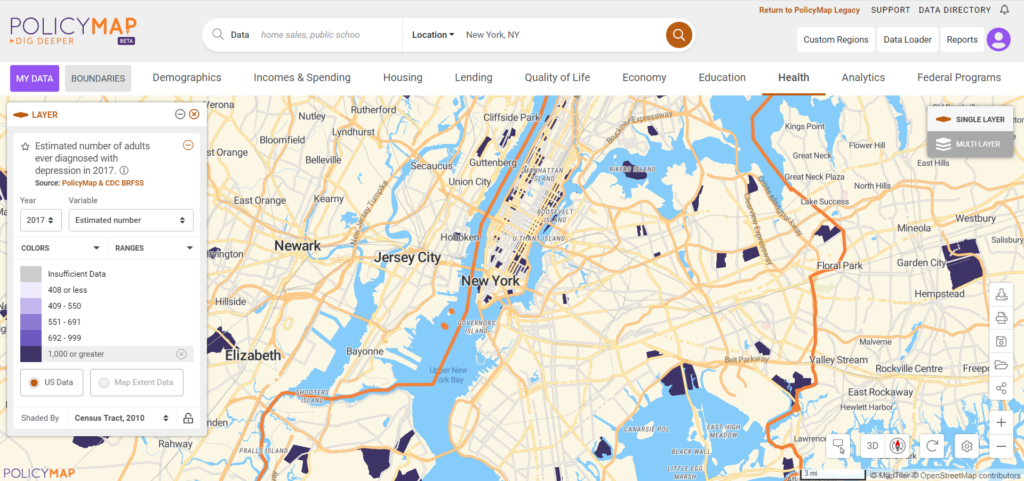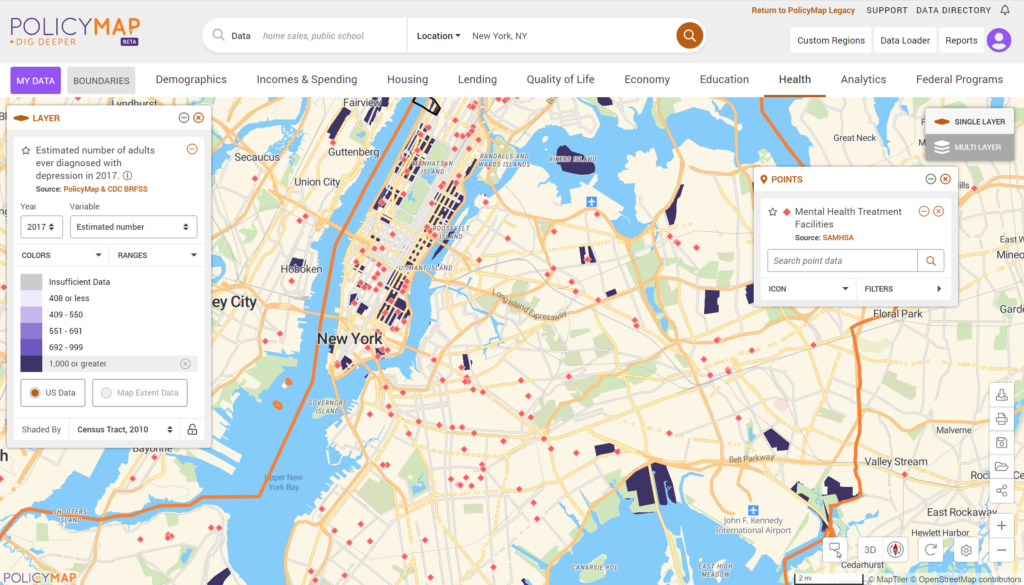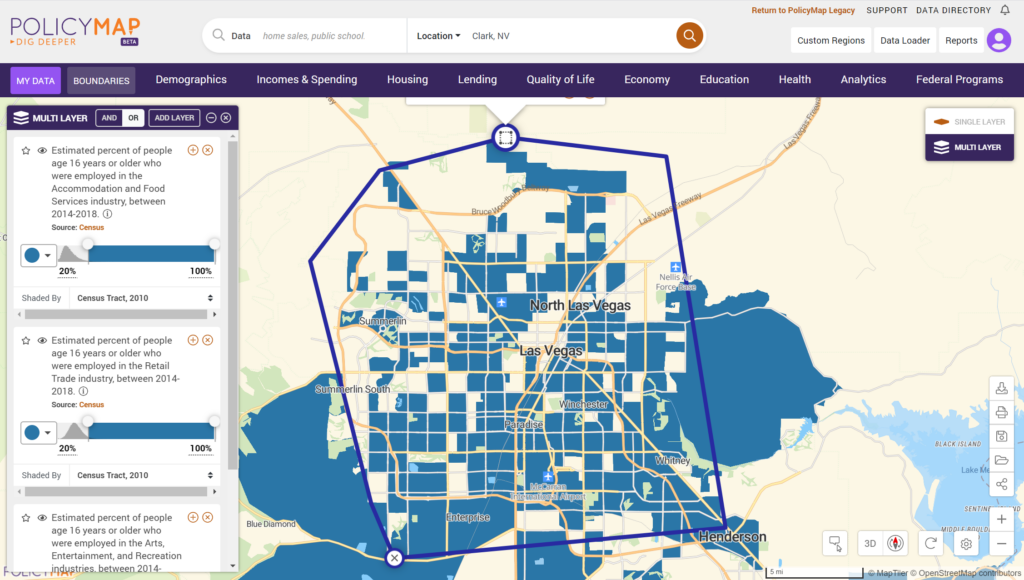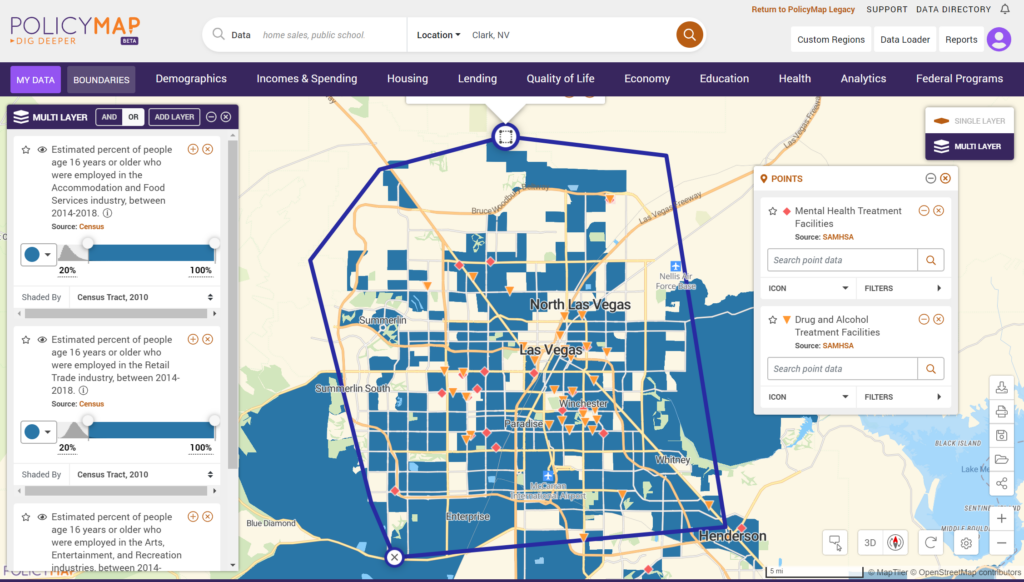Where Mental Health Risks May Be Greatest During COVID-19

Data
Adults Diagnosed with Depression
Source
PolicyMap and CDC BRFSS
Find on PolicyMap
- Health
- Health Conditions
- Depression
- Health Conditions
One in five American workers or 30 million people in the United States lost their job in the last 6 weeks.
More than 1 million people have become infected with COVID-19 and over 60,000 people have died in the US from this virus.
Essential workers go to work every day knowing they risk bringing home the virus.
Non-essential workers, fortunate enough to still be working, work from home while juggling home schooling and family responsibilities.
Those at risk of domestic abuse are quarantined in potentially life-threatening situations.
Elderly populations are living highly restricted and secluded lives.
The pandemic is wreaking havoc with our lives, and it’s putting pressure on our mental health, often due to numerous factors.
While any one of these events can lead people into depression, isolation, anxiety, and substance abuse, we are now living in a time where many households are facing these issues concurrently. Public health experts have already begun to document a rise in mental health issues during this pandemic. A recent poll from Kaiser Family Foundation (KFF) suggests that nearly half of all Americans are impacted by some form of mental health issue due to the coronavirus and that those who were already facing mental health issues prior to the pandemic are cut off from the supports they need. As time goes on, this situation is very likely to worsen.
Creating strategies through which populations most vulnerable to mental health issues can seek and obtain the assistance they need is becoming a growing priority for public health officials. As with all matters related to this novel virus, data needs to play a part in the development of these strategies. Geographic data, in particular, can provide insights regarding where these most affected populations live, where tenuous equilibrium may be upset by more acute needs, and where resources exist or are needed that could help.
Identifying existing populations in need:
Numerous datasets are available that can help us understand where people have been struggling with depression, anxiety, or isolation prior to the pandemic. Looking at these, in combination with the existing resources available for these households, we can pinpoint those areas where additional resources will be required. In the New York City, the epicenter of the outbreak in the US, the rolling 7-day average of new coronavirus diagnoses is 3,201 cases. In that city alone, there are numerous neighborhoods in which at least 1,000 residents were diagnosed with depression in 2017 or earlier. These neighborhoods, highlighted in dark purple below, may be home to people more susceptible to deeper depression given the events of the current pandemic in New York.

And, while there are numerous Mental Health Treatment Facilities in NYC, many do not sit within these neighborhoods with higher incidence of depression.

Identifying future populations in need:
While unemployment numbers are not available at a neighborhood level at this time, researchers such as those at the Federal Reserve Bank of Philadelphia have started to identify neighborhoods where high percentages of residents work in industries that have been most impacted by layoffs and furloughs. It’s likely that these neighborhoods, such as those with high percentages of people employed in retail, accommodation and food service, and arts and entertainment industries will face some of the highest unemployment rates in the nation. One of the starkest views is that of the Las Vegas area where a full 41% of the population works in one of these three hard hit industries. The map below can help to identify where concentrated numbers of those people live.

By then layering on resources, such as Mental Health Treatment Facilities and Drug and Alcohol Treatment Centers, we can identify facilities which may become overwhelmed with the number of patients seeking services, as well as neighborhoods where these services are not easily accessible.

This kind of information can, and should, help drive the strategic distribution of public health resources designed to keep our populations safe and sane during and after this novel pandemic.